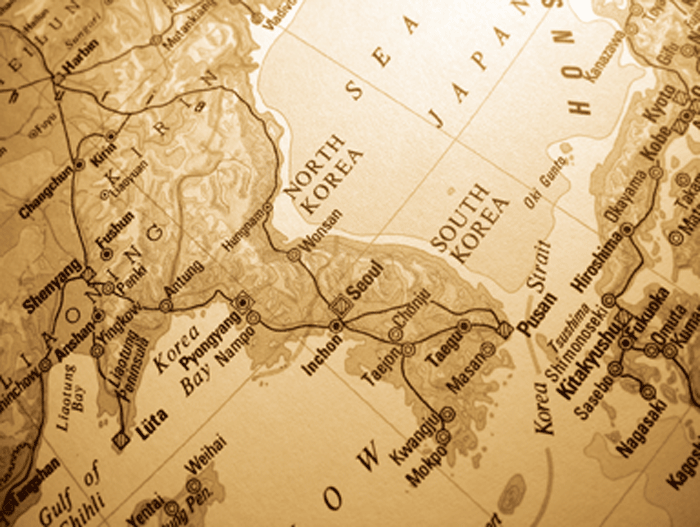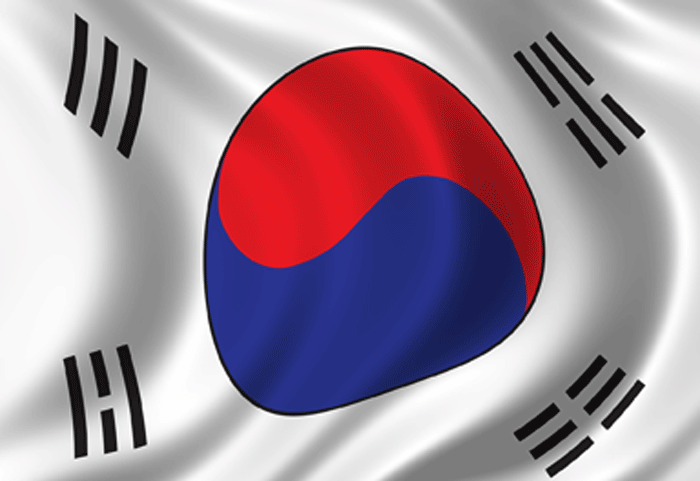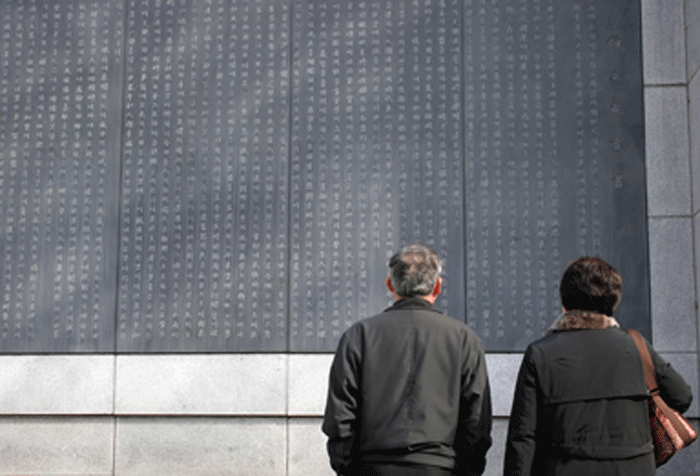Extended Deterrence and Assurance in Korea
By Dr. Richard Weitz
07/06/2011 – The growing nuclear threat from the North Korea, the rising power of China, and the Obama administration’s policy of generally de-emphasizing the role of nuclear weapons in world politics has led some South Korean security experts to question the credibility of U.S. extended security guarantees to defend the Republic of Korea (ROK) from external threats by whatever means necessary.

Credit: Bigstock
The Koreans Remain at the Center of the Asian Security Dynamic
The backbone of these security guarantees, manifested most visibly in the deployment of sizeable U.S. conventional forces in the ROK as well as the bilateral mutual defense treaty between Seoul and Washington, was a U.S. commitment to defend the ROK with nuclear weapons if necessary. If South Koreans lose faith in the U.S. willingness or capacity to defend them, or they come to fear that potential foreign aggressors doubt the credibility of U.S. assurances, then South Koreans might pursue alternative security policies, including possibly seeking their own nuclear weapons, to increase their ability to deter external threats.
These issues of nuclear deterrence and reassurance in the Koreas occupied a major part of the discussion during the first Asan Plenum, which met in Seoul from June 12-15. The Asan Institute for Policy Studies plans for this to become an annual event at which representatives of the world’s leading think tanks meet in South Korea to discuss one of the world’s most important challenges. The goal is for the dialogue to then influence the policies of the world’s governments towards the issue.
Earlier articles in the Second Line of Defense have noted how issues of strategic reassurance also concern U.S. allies in Europe and the Middle East as well as Japan, Taiwan, and other East Asian countries.
https://www.sldinfo.com/?p=19403
https://www.sldinfo.com/?p=18833
https://www.sldinfo.com/?p=16696
Chung Mong-joon, the main shareholder of Hyundai Heavy Industries, is the Asan Institute’s principal benefactor. Asan is the name of the village in the Democratic People’s Republic of Korea (DPRK) from which the founder of the Hyundai empire, Chung Ju-yung, fled southward when he was 18 years old to the Republic of Korea (ROK). Chung Mong-joon has served for many years in the ROK National Assembly and is seen as a potential presidential aspirant.

Credit: Bigstock
Reassuring South Korea Requires Re-Commitment to US Power Projection Forces
This year’s plenum addressed “Our Nuclear Future.” It aimed to provide “a much needed comprehensive reassessment of safety and security issues which have crucial implications for our nuclear future.” Several hundred leading nuclear scientists, engineers, policy experts, and public intellectuals attended. In addition to several plenary sessions, a series of concurrent panels, organized by an individual think tank, focused in greater depth on a particular subject of interest. Since the think tanks that organized this year’s inaugural plenum were mostly based in the United States, most of the participants were American citizens or working at a U.S. research institute.
How to help South Koreans deal with the threatening nuclear weapons ambitions of their northern neighbor occupied a major part of the discussion. The DPRK has detonated two nuclear explosive devices already and is aiming to make nuclear warheads that can be launched on North Korea’s improving ballistic missile capacities.The DPRK’s threatening behavior has affected East Asian regional security in many dimensions, including by calling into question U.S. security guarantees to Japan and South Korea as well as the regional security policies of the People‘s Republic of China (PRC). The discussion made clear that there was no silver bullet that could overcome this reassurance angst.
The South Korean presenters cited several reasons for their belief that U.S. extended deterrence guarantees had become less credible during the last two decades. These include:
-
the withdrawal of the American troops that had been stationed along the Korean Demilitarized Zone (DMZ), where they had served as a trip-wire ensuring that any North Koreas cross-border incursions would meet a U.S. response, to below the Han River;
-
the reduction in the overall number of U.S. troops based in the ROK as well as the number of joint U.S.-ROK exercises;
-
the allocation of new missions for the U.S. Forces in Korea that lead them to focus on other security issues besides defending the ROK from the DPRK (and which threaten to drag the ROK into third-party disputes unrelated to the Korean dispute);
-
the end of the integrated U.S.-ROK wartime command and the transfer of many previous U.S. operational responsibilities to ROK forces;
-
periodic U.S. interest in offering security commitments to the DPRK that appear to neglect ROK security priorities;
-
South Korean concerns that the United States is most interested in containing the DPRK nuclear program through measures such as the Proliferation Security Initiative rather than insisting on its elimination; and
-
unease at Washington’s periodic practice of outsourcing its North Korean policy to Beijing; and
-
the preoccupation of the Pentagon and other U.S. national security leaders with other seemingly more important security issues (non-state terrorism) and regions (the Middle East).
-
 Credit: Bigstock
Credit: Bigstock
Seeking the Ability to Not Need More War Memorials
A more recent concern is the stated commitment of the Obama administration to reduce the role of nuclear weapons in U.S. foreign and defense policies. In particular, the April 2010 U.S. Nuclear Posture Review (NPR) modifies U.S. conditional negative security assurances to state that: “The United States will not use or threaten to use nuclear weapons against non-nuclear weapons states that are party to the NPT and in compliance with their nuclear nonproliferation obligations.” If North Korea were to abandon its nuclear weapons and join the Nuclear Non-Proliferation Treaty (NPT), then the United States would pledge not to use its nuclear weapons to defend South Korea from a DPRK attack even if the North employed what are considered to be strong asymmetric military capabilities such as chemical and biological weapons, forward-deployed artillery, short-range missiles, and special force units.
The doubts became so strong in recent years that President Lee Myung-bak requested that the Obama administration provide written reassurances about the U.S. nuclear commitment to defend South Korea.
The administration did so but also took plains to emphasize in its public statements its security assurances to U.S. friends and allies in East Asia. U.S. Secretary of Defense Robert Gates went out of his way to stress the enduring U.S. commitment to Asian security when he spoke at this June’s Shangri-la defense dialogue. Still, last year’s North Korean shelling of Yeonpyong Island reminded South Koreans that they live under constant threat. The incident represented the first direct attack on ROK territory by the DPRK regularly military since the 1950-53 Korean War.In principle, effective missile defenses could help assure some U.S. allies, such as NATO’s members in Europe, about U.S. extended deterrence guarantees. But certain circumstances make missile defenses somewhat less useful in the case of South Korea, even though the kind of short-range missiles the DPRK could employ to strike the ROK are easier to intercept than the longer-range missiles used by Russia, China, and probably soon Iran.

Credit: Bigstock
Outsouring North Korean Policy to Bejing Can Have Unwanted Consequences
First, the DPRK has a large number of these short-range missiles that could hit targets in the ROK. South Korea would need an enormous number of interceptor rockets to destroy these incoming missiles as well as extensive command and control facilities. This challenge can be contrasted with the missile defense situation facing the United States, which in the next decade will at worst need to track and intercept a few long-range intercontinental ballistic missiles, which due to their lengthy flight time can be shot at multiple times.
Second, the DPRK can easily attack the ROK through a variety of means given their proximity. Not only is Seoul within closer range of DPRK artillery, but the DPRK has developed and practices the capacity to deploy commandos by land (through tunnels) or by sea (with the help of submarines).
Third, the ROK’s joining an integrated missile defense architecture that included the United States and Japan might alarm China and Russia that the BMD coalition members were seeking to negate their strategic deterrence.
Another possible means of reassuring allies would be to return U.S. tactical nuclear weapons to South Korea. The United States withdrew its small battlefield nuclear weapons from the ROK in late 1991 when the North and South Korea were finalizing their “joint declaration on the denuclearization of the Korean peninsula.”The United States clearly has superior nuclear and conventional forces to those of the DPRK, but many South Koreans doubt whether the United States really would respond to a nuclear attack on Seoul with a retaliatory strike against Pyongyang, especially if the DPRK might respond by attacking U.S. forces in Japan, or even striking the U.S. homeland directly, with nuclear-armed ballistic missiles.If the U.S. forces were already in the ROK, however, the North Korean leadership might be more deterred since the weapons would be more visible and could more plausibly be fired, perhaps inadvertently, following a DPRK attack.The North Koreans would be even more credibly deterred if the ROK possessed its own nuclear weapons since the South Korean government and military would be even more inclined to retaliate to a nuclear attack against its population or territory.
Some South Koreans have become frustrated about the failure of the Six-Party Talks and other efforts to roll back North Korea’s nuclear program and see having their own nuclear weapons as “an equalizer” to allow Seoul to negotiate with Pyongyang about Korean denuclearization from a position of equality and without having to adopt an aggressive conventional preemption doctrine against the DPRKAdvocates of either variant hope that plans to return nuclear weapons to the ROK, regardless of whether they were American or South Korean, would function like the 1979 NATO decision to upgrade the alliance’s intermediate-range nuclear forces and result in a two-track process that would see North Korea, with strong encouragement from Beijing, eliminate its nuclear weapons rather than accept a ROK-based nuclear deterrent.
But the ROK’s neighbors would not welcome a return of U.S. nuclear weapons to the Peninsula or South Korea’s acquisition of an independent nuclear deterrent, with Beijing most likely to object to the move since any nuclear weapons based in South Korea that could attack targets in North Korea would most likely be able to hit targets in the PRC as well. For that very reason, however, some have floated the idea as a means to frighten the Chinese to increase their pressure on North Korea to restrain its nuclear ambitions and other threatening activities to avert such a ROK response. South Koreans, Americans, Japanese and others have also sought to exploit Chinese fears that North Korea’s nuclear and missile capabilities will lead Japan and perhaps even Taiwan to acquire missile defenses and nuclear weapons in response. At the Plenum, Former ROK Prime Minister Lee Hong-koo warned that, “China should come back to reality.” He explained that, “If the firing range of North Korea’s missiles are far enough to reach Japan and if those missiles are armed with nuclear warheads then there is a chance Japan would develop nuclear weapons of its own.”
Still, the expectation is that none of these countries would make the controversial decision to pursue their own nuclear deterrents as long as they felt reassured that the United States will protect them. In the past, U.S. officials managed to end the clandestine nuclear weapons programs of Japan, Taiwan, and South Korea by warning them the United States could respond by annulling its pledges to defend them with U.S. nuclear weapons. Another proposal was to delay beyond 2015, or reduce the envisaged size of, the OPCOM transfer from U.S. Forces Korea to the ROK armed forces. While the Americans see the move as upgrading the ROK’s status and underscoring U.S. confidence in the ROK’s improving military capabilities, many South Koreans interpret the move as reflecting American eagerness to reduce its ROK-related commitments to reallocate U.S. defense resources to higher security priorities.
There was also some interest in resuming, at least for a while, the large-scale joint U.S.-ROK military exercises that marked the Reagan administration. These included the massive Team Spirit exercise as well as smaller-sized drills such as Key Resolve, Eagle, and Ulji Focus. The Pentagon has also been developing a range of conventional and non-kinetic strike weapons that could allow for precise measured retaliation for DPRK provocations, though these capabilities must be exercised cautiously in the case of the explosive and unpredictable DPRK regime.A different line of thought was that the United States should adopt a less confrontational stand regarding South Korea’s proposal to reprocess its spent nuclear fuel. The ROK relies on domestic nuclear power for almost 40 percent of its growing residential, public, and commercial electricity requirements.
The problem is that, due to public opposition to constructing a massive high-level nuclear waste repository in their densely populated country, the ROK nuclear industry is running out of secure storage space for its spent nuclear fuel and other intensely radioactive byproducts. For this reason, the ROK wants to “reprocess” this spent fuel—separating the useful uranium and plutonium from the reactor waste products—to reduce these storage requirements.But a 1974 civil nuclear cooperation agreement with the United States, which expires in 2014, prohibits the ROK from engaging in plutonium reprocessing or uranium enrichment without U.S. government approval. The American negotiators are resisting ROK pressure for such approval for fear it would encourage the DPRK to insist on its right to have uranium enrichment and plutonium reprocessing technologies, which can be used to make fissile material for nuclear weapons. It is possible that ROK-U.S. collaboration regarding next year’s nuclear security summit in Seoul would help overcome these tensions.

